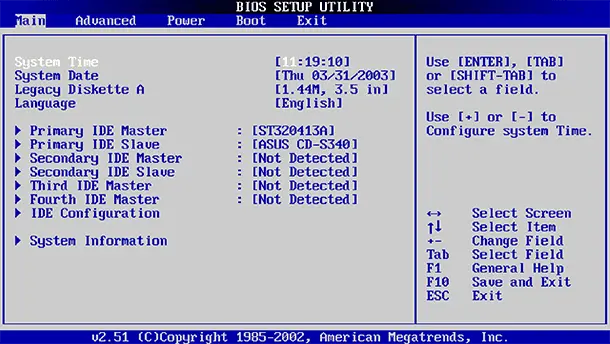Is it safe to run Lenovo BIOS update?
Caution: Be careful when updating the system BIOS. This prevents the system from starting. If the system freezes, crashes, or loses power during the update process, the BIOS or UEFI firmware may be corrupted.
What does the Lenovo BIOS update do?
Lenovo System Update: Lenovo System Update updates and installs Lenovo drivers, BIOS, and applications.
Do I have to accept the BIOS update?
It is important to update your computer’s operating system and software. BIOS updates won’t make your computer faster; they won’t add new features you need and may even cause additional problems. You should only update your BIOS if the new version contains the required improvement.

How long does a Lenovo BIOS update take?
, It takes no more than 10-15 minutes. Read some more forums, and found that bios were resettable. The laptop is a y520, by the way.
How long does a Lenovo BIOS update take?
WARNING: Lenovo System Updates may contain firmware updates. For the T460s ThinkPads as of August 2016, these updates take approximately 1 hour to complete. Firmware updates mustn’t be interrupted.
Do I need to install Lenovo BIOS update 10 64?
In general, if your laptop is working fine, there is no urgency to update. If you are unsure about the message’s authenticity, launch the Lenovo Vantage app and have it check for updates.
Why does Lenovo have so many BIOS updates?
Firmware is simply software stored on an EEPROM chip rather than a disk and can be attacked like any other software. Fortunately, like software on a disk, it can also be updated. And that, in a nutshell, is why you see so many firmware updates for your computer.
What does updating the BIOS do?
Hardware Updates: Newer BIOS updates allow the motherboard to correctly identify new hardware such as processors, RAM, etc. Increased stability—If bugs and other issues are found with motherboards, the manufacturer will release BIOS updates to address and fix these bugs.
How do I know if my BIOS needs to be updated?
Some will check if an update is available, while others will only show you the current firmware version of your current BIOS. In that case, you can go to the download and support page for your motherboard model and see if a newer firmware update file is available than the one currently installed.
How do I know if my BIOS is up to date with Windows 10?
On Windows 7, 8, or 10, press Windows + R, type “msinfo32” in the Run box, then press Enter. The BIOS version number is displayed in the System Summary panel. Look at the “BIOS version/date” field.
Is the HP BIOS update secure?
It is not a scam if downloaded from HP’s website. But be careful with BIOS updates; if they fail, your computer may be unable to boot. BIOS updates can provide bug fixes, newer hardware compatibility, and performance improvements, but make sure you know what you’re doing.
Should I use Lenovo System Update?
Lenovo System Update should be used to update your system after a fresh install or a new image. It is recommended that you do not install BIOS updates along with other updates. Lenovo System Update may need to be run multiple times to ensure all updates are downloaded and installed.
Why are there so many BIOS updates?
Firmware is simply software stored on an EEPROM chip rather than a disk and can be attacked like any other software. Fortunately, like software on a disk, it can also be updated. And that, in a nutshell, is why you see so many firmware updates for your computer.
Is it bad to update BIOS?
Installing (or “flashing”) a new BIOS is more dangerous than updating a simple Windows program, and if something goes wrong in the process, you could freeze your computer. Since BIOS updates usually don’t introduce new features or huge speed boosts, you probably won’t see a huge benefit.
What happens if a BIOS update fails?
If your BIOS update procedure fails, your system will be unusable until you replace the BIOS code. You have two options: Install a replacement BIOS chip (if the BIOS is in a socket chip). Use the BIOS recovery feature (available on many systems with surface-mounted or soldered BIOS chips in place).
Do you need a USB to update the BIOS?
To update your BIOS via DOS, you will need a bootable USB. Take the updated BIOS version and BIOS update utility that you downloaded from the manufacturer’s website and copy them to the newly bootable USB stick. Leave the USB stick connected to the computer. Then reboot the system.
How do I know if I have UEFI or BIOS?
To check if your computer uses UEFI or BIOS, Press the Windows + R keys simultaneously to open the Run box. Type MSInfo32 and press Enter. In the right pane, find “BIOS Mode”. If your PC is using BIOS, Legacy will be displayed. If it uses UEFI, UEFI will be displayed.
How do I check my BIOS settings?
Use Command Prompt Windows Logo Key + S -> Type cmd in the search box -> Click on Command Prompt. Type wmic bios get smbiosbiosversion -> Enter -> Check your BIOS version number.
Does updating the BIOS change the settings?
When you update your BIOS, all settings will be reset to default. So you have to go through all the stages again.
